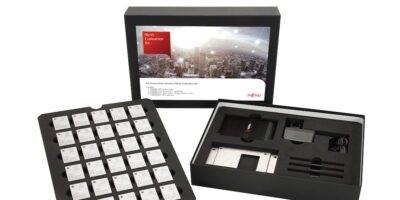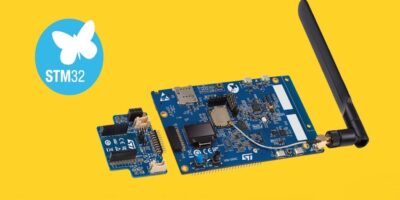Fujitsu Components America has released a low-cost IoT connectivity solutions mesh evaluation kit that the company says simplifies feasibility testing of all use cases for wireless IoT solutions driven by fully scalable and robust Wirepas mesh technology and Fujitsu hardware.
Each Fujitsu mesh evaluation kit ships with all the required components and tools to build a mesh network of sensors, including five FWM8BLZ07Y sensor nodes with the following onboard temperature, humidity, barometric pressure, accelerometer, luminance and sound level sensors. There are five FWM8BLZ07P mesh nodes set as asset tags and 20 FWM8BLZ07P mesh nodes set as Wirepas anchor nodes for location awareness. One FWM8GWZ01 wi-fi gateway with two Wirepas sink nodes connects the mesh network to the cloud service and one concise manual explains the usage and installation of the included hardware and software package.
The kit comes with a three-month software evaluation licence that gives customers access to the full-production grade Wirepas network tool, the Wirepas positioning engine and the sensor data webpage, which are all connected to a cloud instance.
The mesh evaluation kit contains all the necessary settings and cloud setup to ensure quick and easy installation.
Once installed, a web-based monitor presents all the sensor data, which visualises the asset location tracking function and provides insight on how the Wirepas network works.
Fujitsu works with a host of industry partners that specialise in back-end software and can design a custom offering to fit special use cases.
The Fujitsu IoT connectivity solutions mesh evaluation kit is available now.
Fujitsu Components America markets and distributes electronic and system components and sub-systems throughout North and South America. Products include relays, touch panels, thermal printers, wireless modules, and input and pointing devices.
The company is headquartered in Sunnyvale, California.







